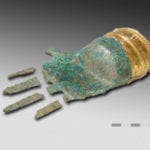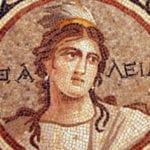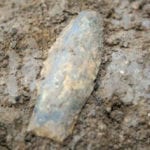 Weird Stuff
Weird Stuff  Weird Stuff
Weird Stuff  Mysteries
Mysteries 10 Tragic Disappearances and Deaths in Joshua Tree National Park
 History
History 10 Ways Childhood Really Sucked in the Old West
 Music
Music 10 Name Origins of Famous Bands from the 1990s
 Religion
Religion 10 Biggest Turnarounds by the Catholic Church
 Weird Stuff
Weird Stuff 10 Unbelievable Times Laws Had Unintended Consequences
 Humans
Humans Ten Historic Women Who Deserve Way More Credit Than They Got
 Movies and TV
Movies and TV 10 Films That Spawned Major Lawsuits
 History
History Ten Times Towns Were Wiped Off the Face of the Earth
 Creepy
Creepy 10 of the Most Disturbingly Haunted Public Houses in the UK
 Weird Stuff
Weird Stuff 10 Niche Subcultures That Are More Popular Than You Might Think
 Mysteries
Mysteries 10 Tragic Disappearances and Deaths in Joshua Tree National Park
 History
History 10 Ways Childhood Really Sucked in the Old West
Who's Behind Listverse?

Jamie Frater
Head Editor
Jamie founded Listverse due to an insatiable desire to share fascinating, obscure, and bizarre facts. He has been a guest speaker on numerous national radio and television stations and is a five time published author.
More About Us Music
Music 10 Name Origins of Famous Bands from the 1990s
 Religion
Religion 10 Biggest Turnarounds by the Catholic Church
 Weird Stuff
Weird Stuff 10 Unbelievable Times Laws Had Unintended Consequences
 Humans
Humans Ten Historic Women Who Deserve Way More Credit Than They Got
 Movies and TV
Movies and TV 10 Films That Spawned Major Lawsuits
 History
History Ten Times Towns Were Wiped Off the Face of the Earth
 Creepy
Creepy 10 of the Most Disturbingly Haunted Public Houses in the UK
Top 10 Insights Gleaned From Ancient Documents
The ancients had a prolific habit of documenting their lives on anything from skin to stone. Although this archive may be old, it may add new translations or technology and the results can be revealing.
From books that belonged to samurai and pirates to mysterious events that could rewrite history, the written word can color history’s gray spaces like nothing else. Here are 10 ancient documents that have produced sometimes surprising insights into past events and people.
10 The Samurai Manual

Tsukahara Bokuden was a great samurai and perhaps the author of a curious book. Called The Hundred Rules of War, it was recently translated into English. The manual provides advice on fighting skills and how a proper samurai should behave. Among descriptions of cowardly behavior were those who did not drink or treasured horsemanship.
Though authorship is impossible to prove, many believe that the book was compiled in the last year of Bokuden’s life (1489–1571). The manual is not your usual rule book but a collection of songs. The musical caveats focus on many areas of a samurai’s life, from the best name for a baby born into the warrior class to remembering that neither life nor death was as important as moving forward.
The work provides fascinating threads about preparations for training and war. A horse reflected the rider’s mind, and the author is frank—a small animal meant a dumb samurai. The best prebattle meal, the book advised, was rice warmed with water. Other snacks included dried plums and roasted beans. Researchers found the plums helped with thirst but are not exactly sure why the book strongly insists on the beans.[1]
9 Oldest Marriage Contract
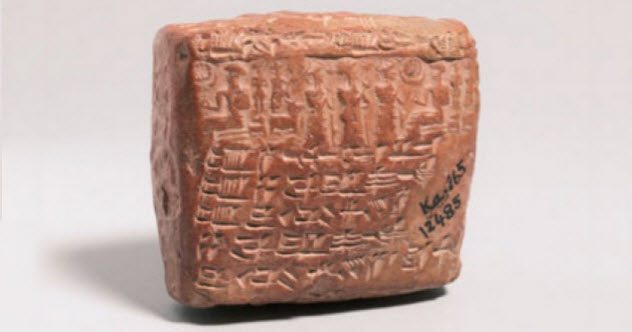
Around 4,000 years ago, a couple carved a prenup in clay. When it was found in 2017 at the archaeological site of Kultepe-Kanesh in Turkey, it soon became clear that having children was part of the deal.
The Assyrian pair, Laqipum and Hatala, agreed to try for two years to produce their own offspring. If none arrived, then it became the wife’s duty to look for a surrogate. More specifically, Hatala had to buy a female slave for her husband. Once they had a child together, Laqipum was allowed to sell the mother if he so chose.[2]
The contract is the oldest to mention surrogacy and infertility, although in a somewhat different light than practiced today. Though it reflects the ancient belief that infertility was the wife’s fault, the contract provided an equal opportunity divorce settlement. The person who initiated the separation had to pay the other person five minas of silver.
8 Hidden Coffin Script
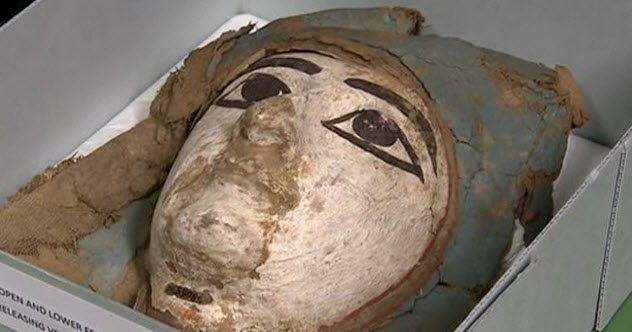
An Egyptian mummy at Chiddingstone Castle in Kent frustrated experts in the way that so many mummies tend to do. Their identities are hidden beneath swaths of papyrus pages. To read the deceased’s name, the required peeling often destroys the precious artifacts.
In 2017, researchers devised a scanning technique that would allow a hidden script to be read without causing damage to the mummy. The 3,000-year-old remains at Chiddingstone lost its mysterious anonymity when the footplate was scanned. It revealed that the bandages contained a man named Irethoreru.[3]
But the technique was good for more than just calling upon lost names. The papyrus used to shape the mummy cases was originally ancient waste paper. Since paste and plaster obscured them, the content remained invisible for centuries.
During scans, a trove of hieroglyphic scraps from Egyptians’ lives could be seen, including tax papers and shopping lists. Once considered rubbish, this material is now one of Egyptology’s best resources to mine for papyrus used for everyday notes.
7 True Reign Of Rameses

Egyptology is an intensely studied field, but even so, the reign of each pharaoh is an estimate. One of the most famous was Rameses the Great. In 2017, a Bible passage was compared with a battle documented on a stele. Pharaoh Merneptah, son of Rameses, described how he defeated the Israelites.
What they have in common are the ingredients to what could be the oldest solar eclipse on record. The passage in the Book of Joshua described how Joshua led the Israelites into Canaan. To overcome their enemies, he successfully ordered the Sun and Moon to stop moving.
The text confused scholars until they realized that the original Hebrew-to-English translation offered another interpretation. Alternately, it meant that the Sun and Moon stopped shining. The stele’s inscriptions placed the Israelites in Canaan between 1500–1050 BC.
If the Joshua event was an eclipse, the only one visible in Canaan during that time was on October 30, 1207 BC. The stele stated that it was carved during Merneptah’s fifth year as king. The length of his rule and his father’s is known, but the eclipse narrows it down to within a year. If the study is correct, Rameses ruled from 1276–1210 BC.[4]
6 A Pirate’s Book
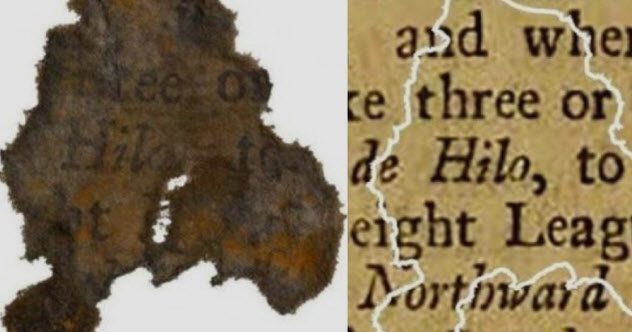
Not just any pirate. The scraps of paper were found on the vessel Queen Anne’s Revenge, commanded by the famous Blackbeard. In 1718, the Revenge sank near North Carolina and became the subject of painstaking analysis ever since her discovery in 1996.
Plenty of the usual stuff was found—weaponry, tools, and personal artifacts. But the most unexpected discoveries were 16 paper fragments stuffed into a cannon. At first, it appeared to be cloth used to block a chamber. When the waterlogged mass was examined, its rarity became clear.
Paper almost never survives underwater, let alone for three centuries. Seven of the pieces had readable print, and a single place name, Hilo, identified the book. The pages were torn from A Voyage to the South Sea, an adventure story about a sea captain who, among other things, describes the coastal settlement in Peru.
It is a fitting addition to any pirate’s library. But which sailor owned the book or why it got stuffed into the cannon is a mystery. It does provide important evidence for books on 18th-century ships and confirms records referring to Blackbeard’s crew owning several.[5]
5 Mystery Of Mapmakers’ Monsters
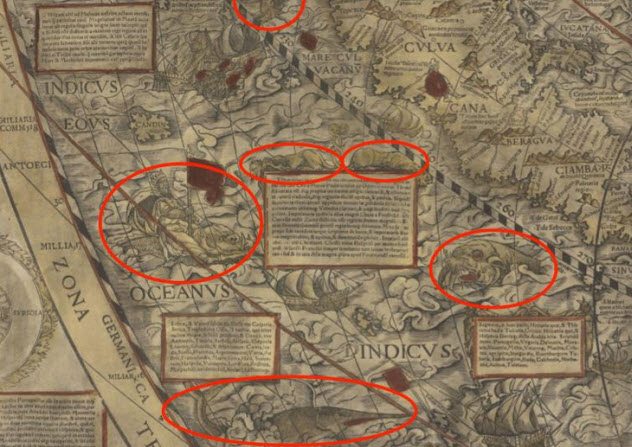
Many ancient maps appear to have been made by artists more interested in embellishments than geography. Most hail from the 16th and 17th centuries. Sea monsters, imaginary cities, and incorrect written “facts” adorn spaces where there should have been mountains or islands.
This tradition in cartography may be centuries old, but it defies the point of mapmaking. Although rich buyers expected some decoration, explorers sought correct geography, not dragons.
One motivation could have been a fear of looking ignorant. In this context, mapmakers could have been subjected to what historians call horror vacui—an aversion to blank spaces in artwork.
No mention of horror vacui is made by mapmakers, except one. Dutchman Petrus Plancius added an accurate southern star chart to his 1592 world map. Although he never mentioned the fear, Plancius included a note explaining that the constellations replaced the southern hemisphere in case it remained empty.[6]
By the middle of the 18th century, horror vacui lost its grip and maps became more scientific. Unexplored locations were left blank.
4 The Canterbury Roll
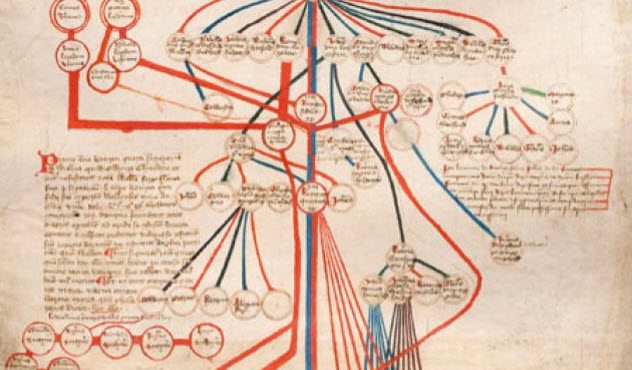
The inspiration behind the hugely successful Game of Thrones novels was a real-life power struggle. In England, the Houses of Lancaster and York battled for supremacy in what became known as the Wars of the Roses.
Despite the violence, both sides contributed to a unique and remarkable piece of art. Naturally, it was not a mutual project. Rather, it was created by one side and embellished by the other.
The Canterbury Roll is a beautiful record of England’s mythical beginnings until the Wars of the Roses. Measuring 5 meters (16 ft), it was drawn up by the House of Lancaster in the 1420s. Sometime during the conflict, it was acquired by Yorkists, who partially rewrote the document.[7]
It has been in the possession of the University of Canterbury in New Zealand for over a century. Researchers believe that the thoroughly investigated manuscript still has secrets. They are planning to use new techniques, such as advanced imaging, to search for hidden phrases and to make the entire Canterbury Roll digitally available to the public in 2018.
3 Unknown Production Process
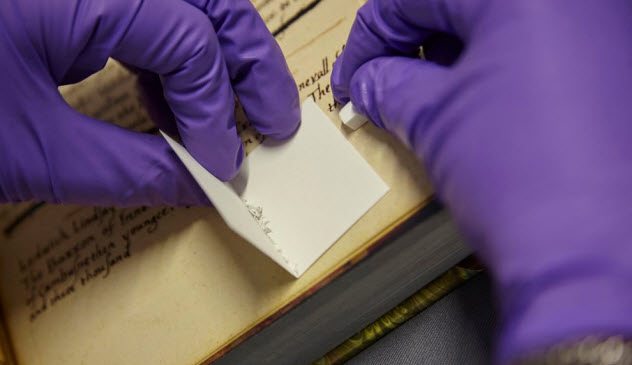
During the 13th century, thousands of mini Bibles were churned out. They contained Genesis through Apocalypse, yet they were snug enough to be carried in a pocket.
The tiny books were forged with a technology that still eludes modern understanding. Researchers were alerted to the fact when they solved a related query. The pages are ultrathin, said to be achieved using fetal calf’s skin.
But the books’ numbers meant that the supply of aborted livestock could not be sustained. Tests searched for thin-skinned substitutes like rabbits, rats, and squirrels. Turns out no rodent died to become a page, but calf, goat, and sheepskin was used.[8]
This solved one of the biggest riddles before the era of printing. (The Bibles were handwritten.) Even though some of the material may have come from unborn animals, most did not. This begged the question: How were the pages, which were tough enough to survive 800 years, made so thin?
Some measured 0.03 millimeters (0.001 in). But by the time medieval sources recorded page-making techniques, the process was already lost. Writers mined secondhand information, and any modern replications met with failure.
2 The Viceroy’s Tomb
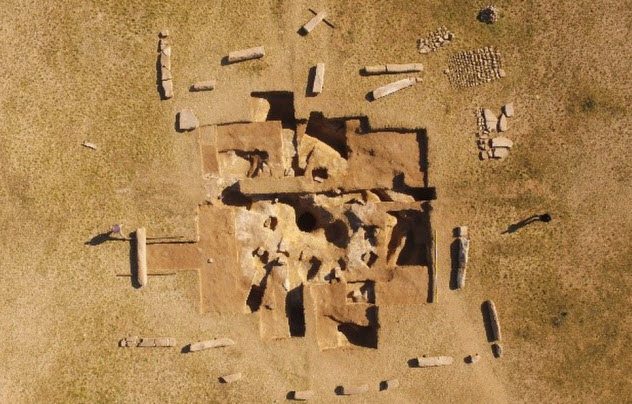
In 2017, the Mongolian steppe produced a stone monument bearing a powerful man’s story. Consisting of 14 pillars around a sarcophagus, the mysterious tale is fraught with power and possibly assassination.
The 1,300-year-old coffin is now empty. Similar to the pillars, it is covered in Turkic script documenting the rise of the anonymous man. In the centuries before Genghis Khan, this man’s influence came second only to the ruler, Bilge Qaghan (r. 716–734).
The pillars revealed that the deceased held the title of “Yagbu” (“Viceroy”). After the poisoning of Bilge, the man moved up to “Tolis-Shad” (“Royalty of the East”). This assassination is mentioned in historical records, and it is unclear if the viceroy was involved. However, it is not too far-fetched to consider him a plotter.[9]
The empire, which covered modern Mongolia and some of northern China, was politically lethal. Senior commanders often equated getting a promotion with murdering another high-ranking individual. Even Bilge’s successor was killed, but this proved too much for the teetering power structure.
Sometime after the assassination of Tengri Qaghan (r. 734–741), the empire collapsed. The monument could add information about the region’s rulers as well as their relationship with the Mongolian tribes.
1 Lost Verse And Faces
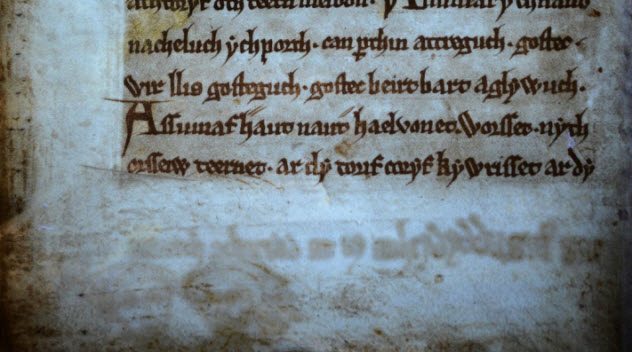
The oldest manuscript referencing King Arthur and Merlin is the Black Book of Carmarthen. Named for the color of its binding, the book is a compilation of poems from the 9th–12th centuries.
During a 2015 project, the pages were examined under ultraviolet light and photo editing software. To the researchers’ delight, they found something invisible to the naked eye. Among the hidden trove were human faces and verse.[10]
Reflecting a very relatable behavior by modern bookworms, notes were also scribbled in the margins by medieval readers. They wrote down their ancient thoughts most heavily near the end of the 16th century. The recovery of the doodles is valuable because they present a direct connection between past readers and the researchers trying to pick their brains.
The details were not hidden on purpose. It is believed that a previous owner, Jaspar Gryffyth, removed them. The manuscript is the earliest penned in Welsh, sometime around AD 1250, likely by a single author who collected poems about Welsh folk stories and Dark Ages legends.
But the Black Book’s greatest importance is how it demonstrates that even well-studied manuscripts can still deliver a large amount of new information.
For more revelations from ancient documents, check out 10 Oldest Surviving Documents Of Their Type and 10 Mysterious Documents We Couldn’t Read Until Recently.
